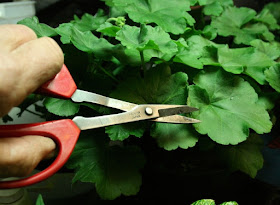Gardening is good for us. We know this because, as a group, people who garden tend to be healthier and more optimistic than those who don't garden. During this time of the year, looking forward to the promise of the upcoming gardening season, we can resolve to become even better gardeners by developing our gardening skills, by improving our existing garden and by doing simple things that make our gardening experience even more enjoyable.
Simple things such as labeling your plants. This is especially true of bulbs. They come up and bloom beautifully and before you know it, the foliage has died back and you've forgotten about them until you go to plant something and you accidentally dig up your bulbs. All that can be avoided by simply labeling them while they are blooming. Resolve to get in the habit of marking your plants as you go. Resolve to keep a garden journal. A garden journal is a record of what you've done in the garden through the season, including planting dates, seed types, weather conditions and so on. A journal becomes complete record of your garden and you can use it to make decisions on which plants or vegetables you'd like to keep and which ones you'll start over. Not interested in a written journal? Take pictures. This is a simple yet effective way to document your garden through the season. Most of us have our cell phone with us all the time. Take a picture of your garden as it grows. This a great way to document where things are planted and will help you make decisions on what to plant next year and where. Resolve to buy good tools and take care of them. The right tool makes all the difference when it comes to working in the garden. Keeping tools sharp and oiled and organized is another way to make your garden chores more efficient. Resolve to protect yourself while you're outdoors gardening. Wear a hat, apply sunscreen, pick up a good set of gloves and lotion. And use them. Resolve to become a better gardener. Take a class, join a garden group or community garden. The more you know, the better you'll grow. Resolve to share your enthusiasm for gardening. Get your children or your grandchildren involved. Teaching them what you know about gardening is a gift they will use and remember all of their lives. Finally, make time to smell the roses. Or enjoy the dahlias or the zinnias or whatever is growing in your garden at the time. Working in the garden isn't all about the chores you "have to do". Whether you're growing tomatoes or dahlias, make sure you pause every now and then and enjoy your garden. It's one of the healthiest aspects of your life. Enjoy it!





























